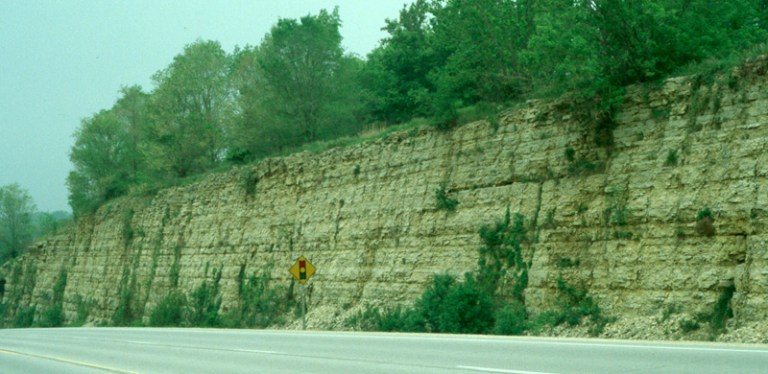On February 27, I posted here about the estimated 2016 state-wide stream nitrate-N load (https://www2.iihr.uiowa.edu/cjones/iowa-statewide-2016-stream-nitrate-n-load-calculated/). My colleagues and I used multiple sources of data to estimate Iowa streams delivered 1.04 billion pounds of nitrogen to the Mississippi and Missouri Rivers during 2016.
As we go about our regular lives, a billion of anything seems like a whole lot. For example, if you need to count a billion things, it’s going to take a while. An 80-year lifespan would include only 42 million seconds, not even close to one billion (0.042). Back to the nitrate, a billion pounds is only 473 million kilograms, which sounds a lot less impressive. So anyway, lately I have been thinking about this number and its context within overall water quality.
As part of that, I took a look at the periodic table (https://en.wikipedia.org/wiki/Periodic_table) and wondered what the totals might be for some other common elements transported by the hydrogen and oxygen (H2O-water) of Iowa streams. Using various information about what I know of Iowa streams and 2016 river discharge, I did some calculations.
Carbon. Carbon is transported by Iowa streams in two main forms: inorganic carbonate ions (CO3-2) and organic carbon in the form of humic acids, which are decomposition products of organic life. Carbonate ions are usually combined with calcium or magnesium in rocks such as limestone, which have been present throughout Iowa for many millions of years. Under the right conditions carbonate ions will be dissolved by water and enter the stream network. Carbonate ions also result from the oxidation and decomposition of organic matter such as that found in Iowa soils. This is a natural process that can be greatly accelerated by crop production. Calcium carbonate is also applied to Iowa soils to enhance soil quality. About 80-90% of the carbon found in our streams is inorganic (i.e. carbonate) and the rest is in organic compounds. The 2016 total for Iowa: 7.7 billion pounds, or 213 pounds per acre of land. There is evidence in the literature that carbon amounts delivered to the oceans by streams is increasing across the U.S.
Calcium. One of the most common elements of the earth’s crust, most calcium exits the landscape in the form of calcium bicarbonate. Calcium carbonate is also applied to Iowa soil to enhance its buffering capacity. The amount leaving in Iowa streams in 2016: 11.8 billion pounds, or 328 pounds per acre of land.

Magnesium. Like calcium, magnesium is a common companion to carbonate. The amount leaving in Iowa streams in 2016: 3.5 billion pounds, or 97 pounds per acre of land.
Chloride. Chloride reaches our streams from a multitude of sources, maybe more sources than any other pollutant. It occurs naturally in some rocks. It is also present in animal and human waste, road salt, and wastewater treatment plant discharges. Chloride is also present in some fertilizers as a potassium salt. Iowa stream levels have likely increased about three-fold since 1944. The amount leaving in Iowa streams in 2016: 3.4 billion pounds, or 94 pounds per acre of land.
Sodium. The sixth-most abundant element in the earth’s crust enters our streams in salts of chloride, carbonate and other components. It also present in wastewater discharges. The amount leaving in Iowa streams in 2016: 1.2 billion pounds, or 33 pounds per acre of land.
Sulfur. Sulfur reacts with almost all the other elements in the periodic table, but is present in Iowa streams almost exclusively as sulfate ions SO4-2. Sulfur can be tied up in the organic matter of plants and soil and enter streams as this material is oxidized. It is also a necessary plant nutrient and is present in some fertilizers. This all makes the biogeochemistry of sulfur very similar to nitrogen, and the historical trends of stream sulfur likely mirror that of nitrogen. Interestingly, the 2016 load is very similar to that for nitrogen. The amount leaving in Iowa streams in 2016: 1.3 billion pounds, or 36 pounds per acre of land.
Iron. Earth’s most abundant element is also present in Iowa streams. The amount leaving in Iowa streams in 2016: 0.13 billion pounds, or 3.5 pounds per acre of land.
This all brings us back to nitrogen, and why the 1.04 billion pound load in 2016 really gets our attention. From what we know, nitrogen levels in our streams have increased 6-7 fold since European settlement. This is not because we’ve increased the total supply of nitrogen on the landscape; rather it is because we have increased the supply of nitrate-nitrogen. By doing that, we changed the natural processes that restrict nitrogen from entering our streams, and we converted a nitrate-delivery system that was once supply-limited to one that is now transport-limited, i.e. one that is dependent upon the amount of water moving through the system.
So the development, expansion and intensification of row crop and animal agriculture throughout the region during the 20th century not only changed the magnitude of nitrogen delivery, but also altered the predominant form entering streams. This has altered the biotic integrity of streams and receiving waters such as the Gulf of Mexico. Likewise the mechanisms that govern N processing in soil and stream waters and sediments have been radically altered in response to these quantitative and qualitative changes in nitrogen and other elements such as carbon and sulfur.